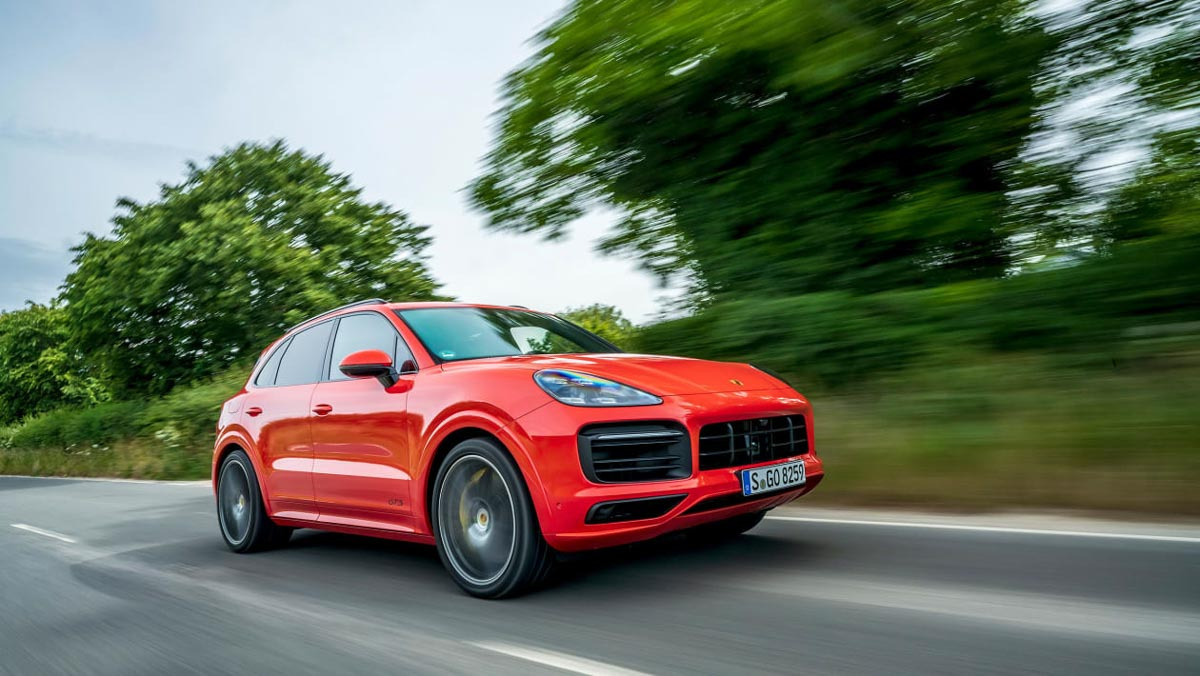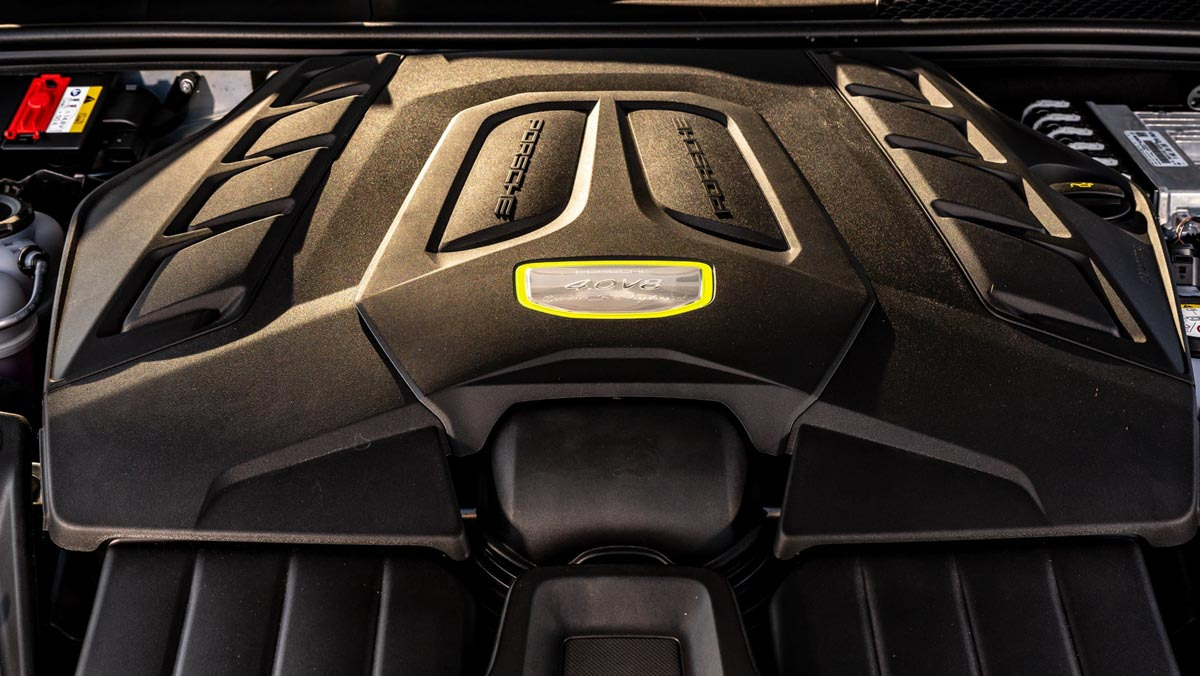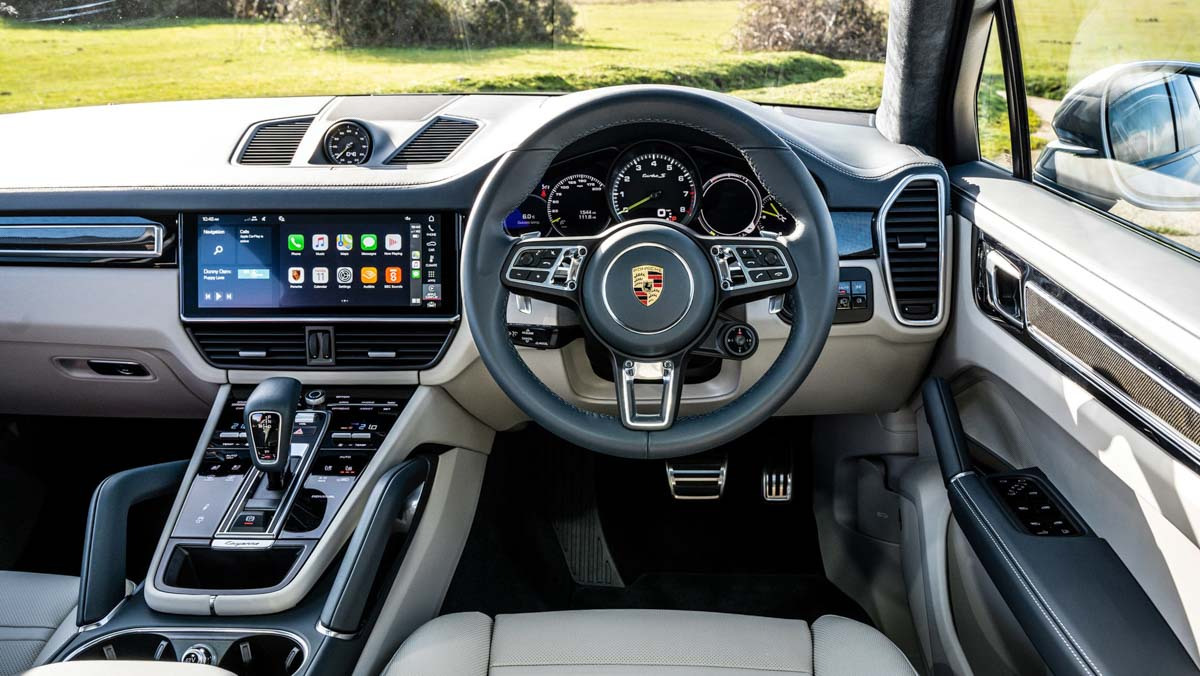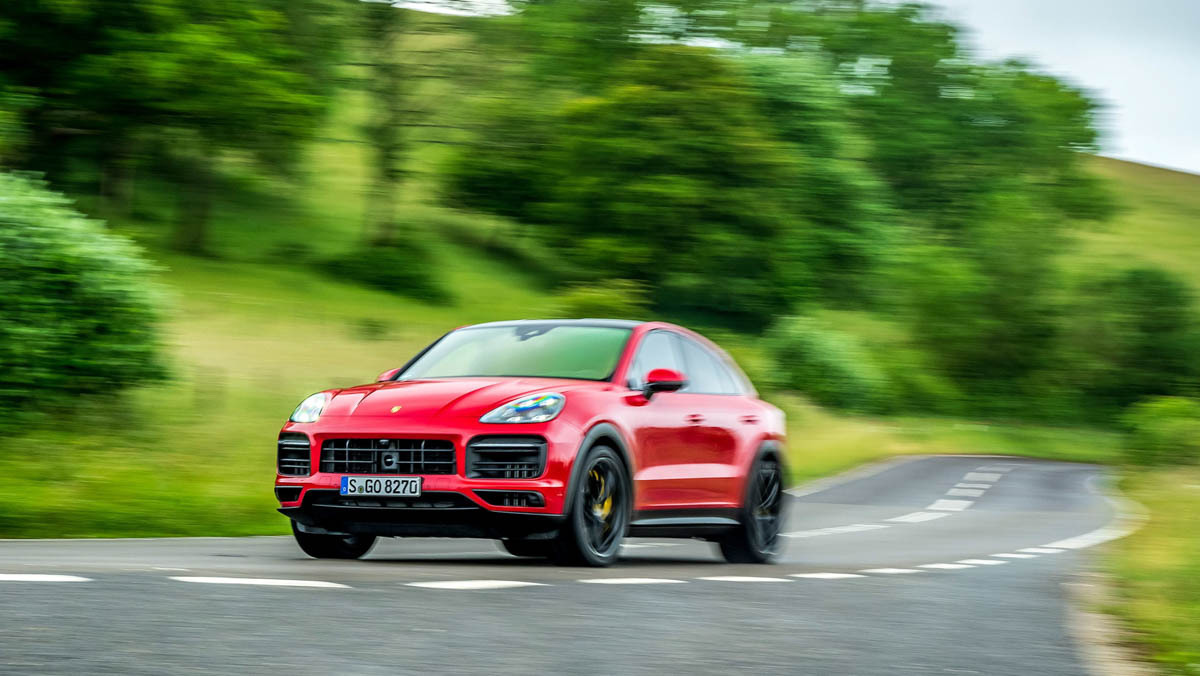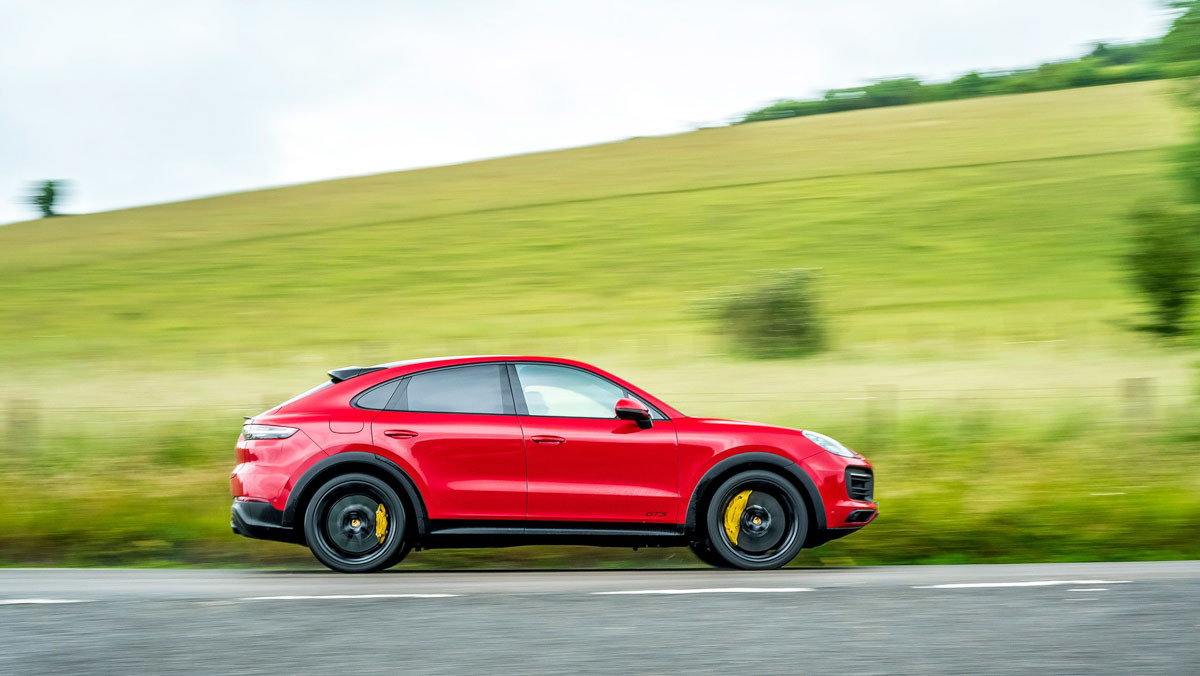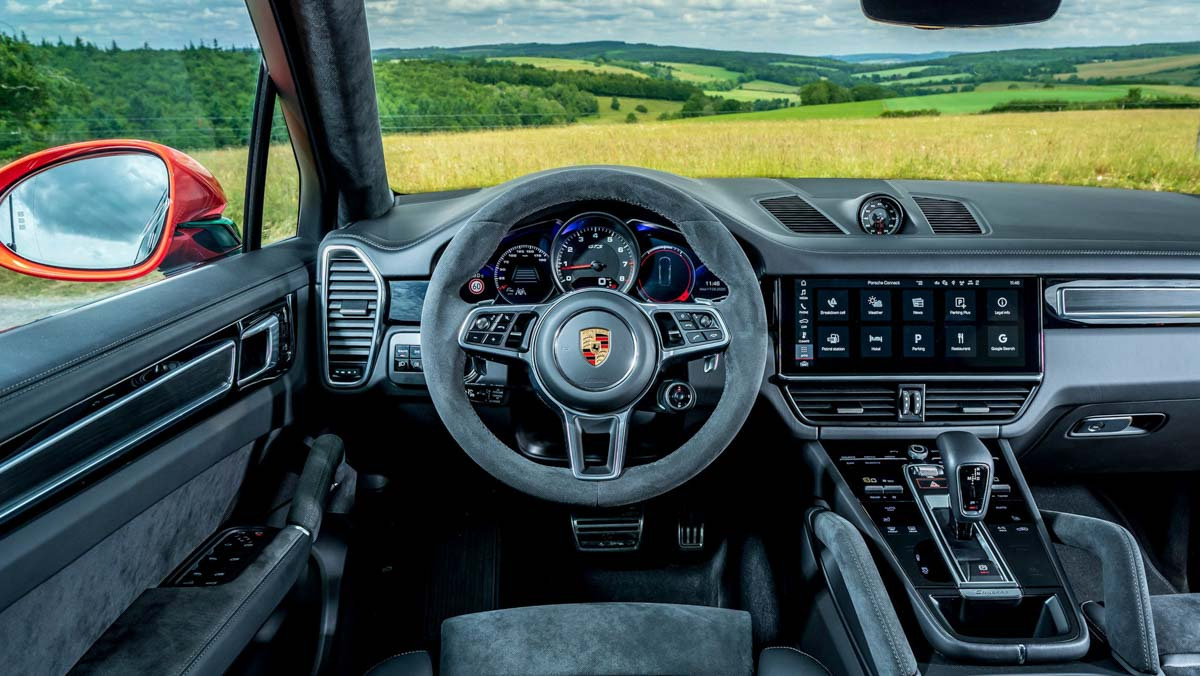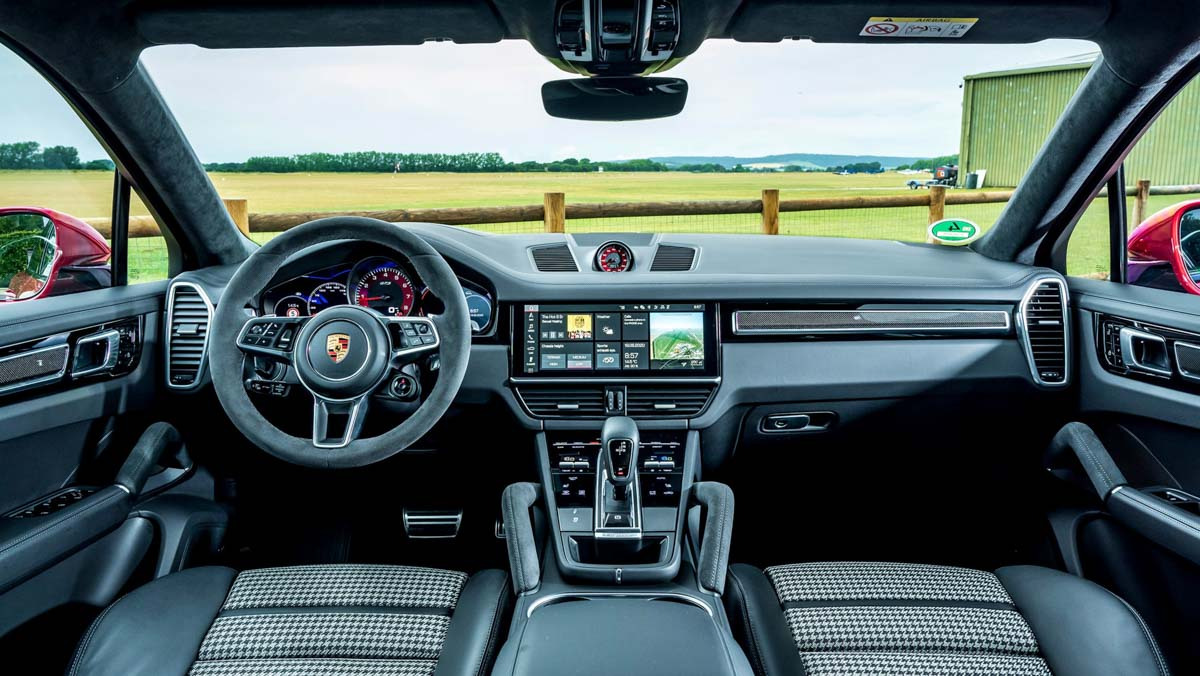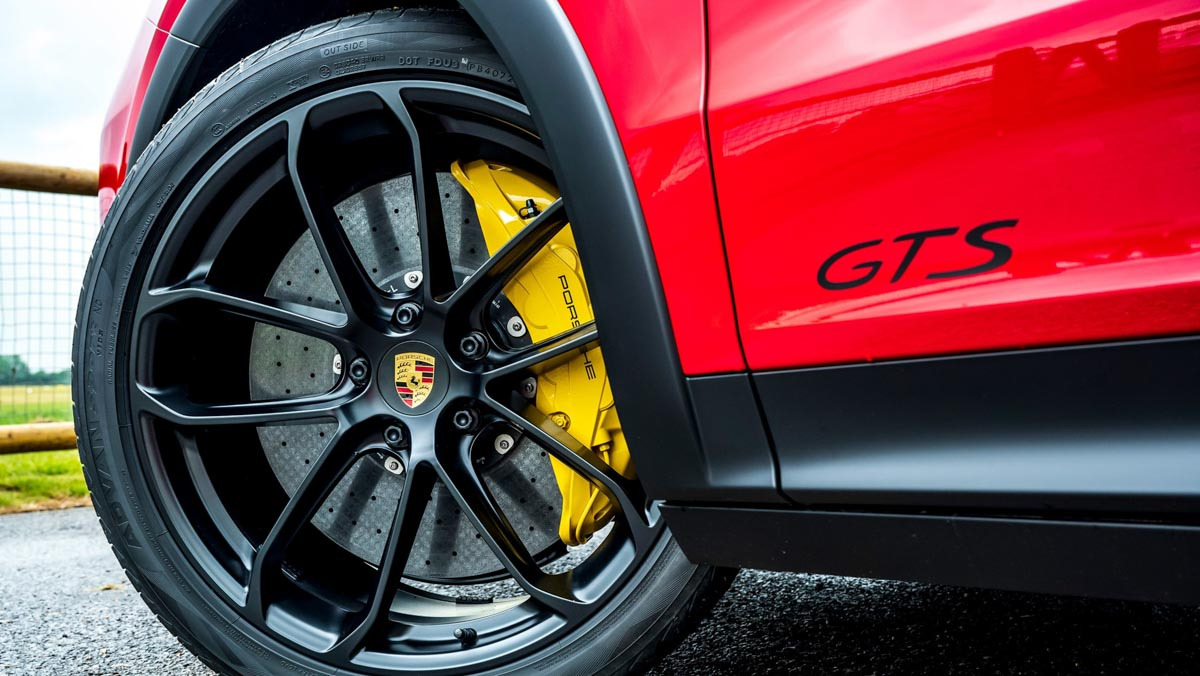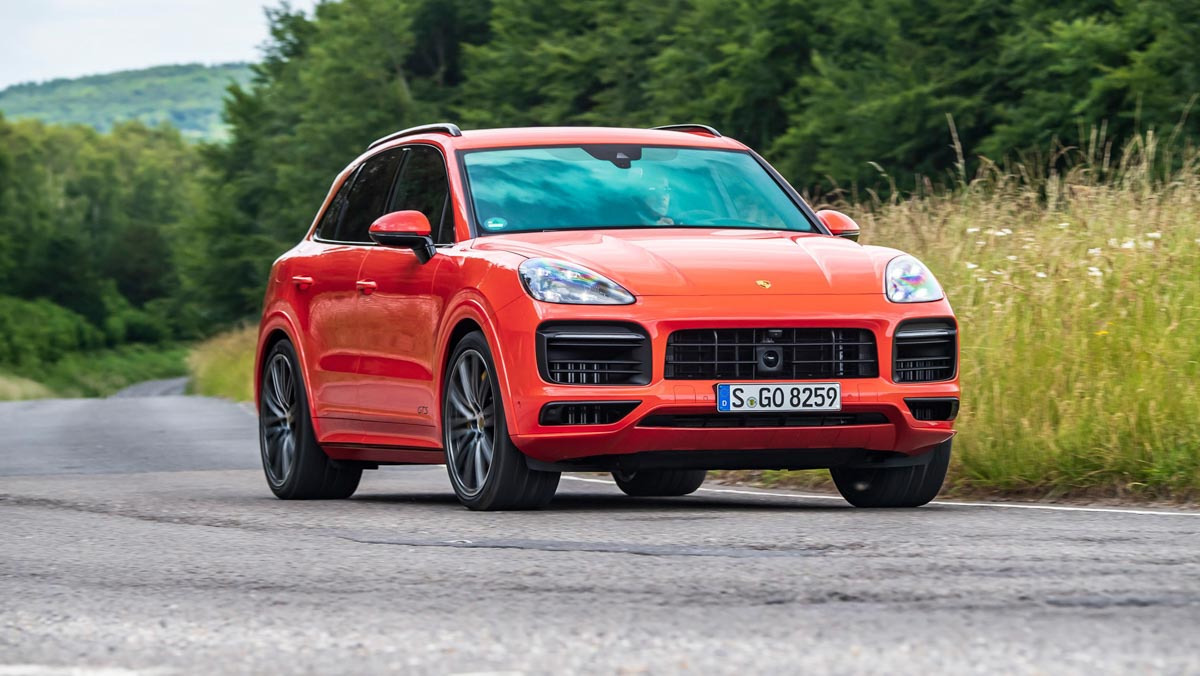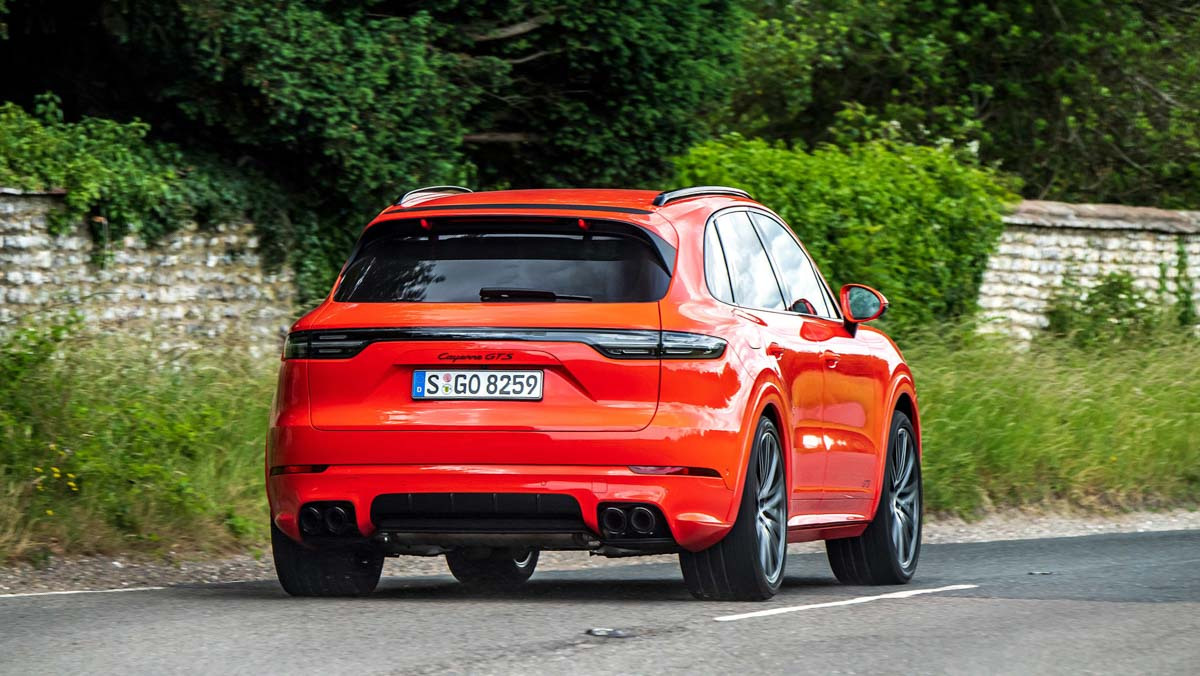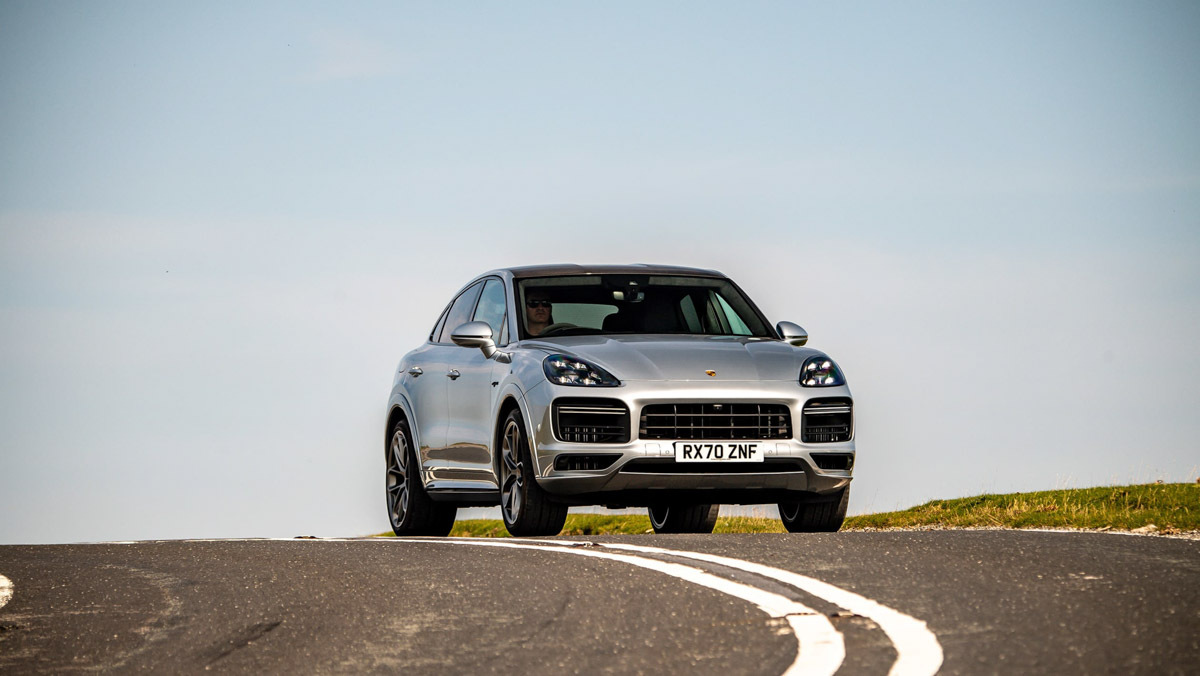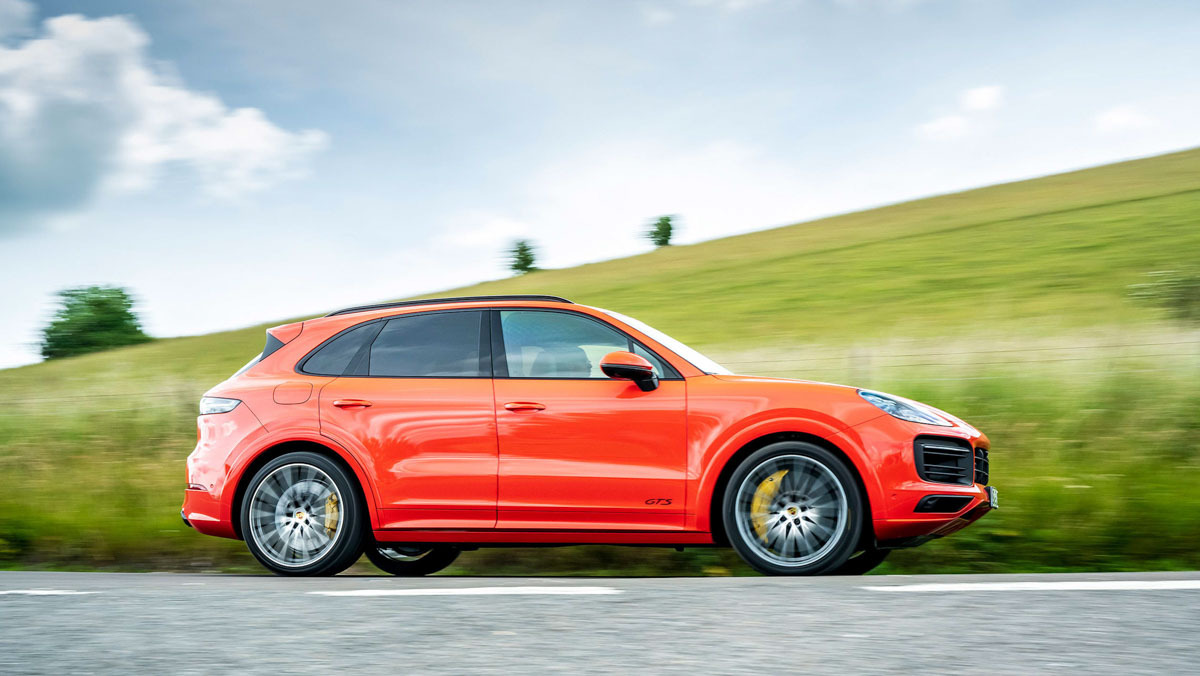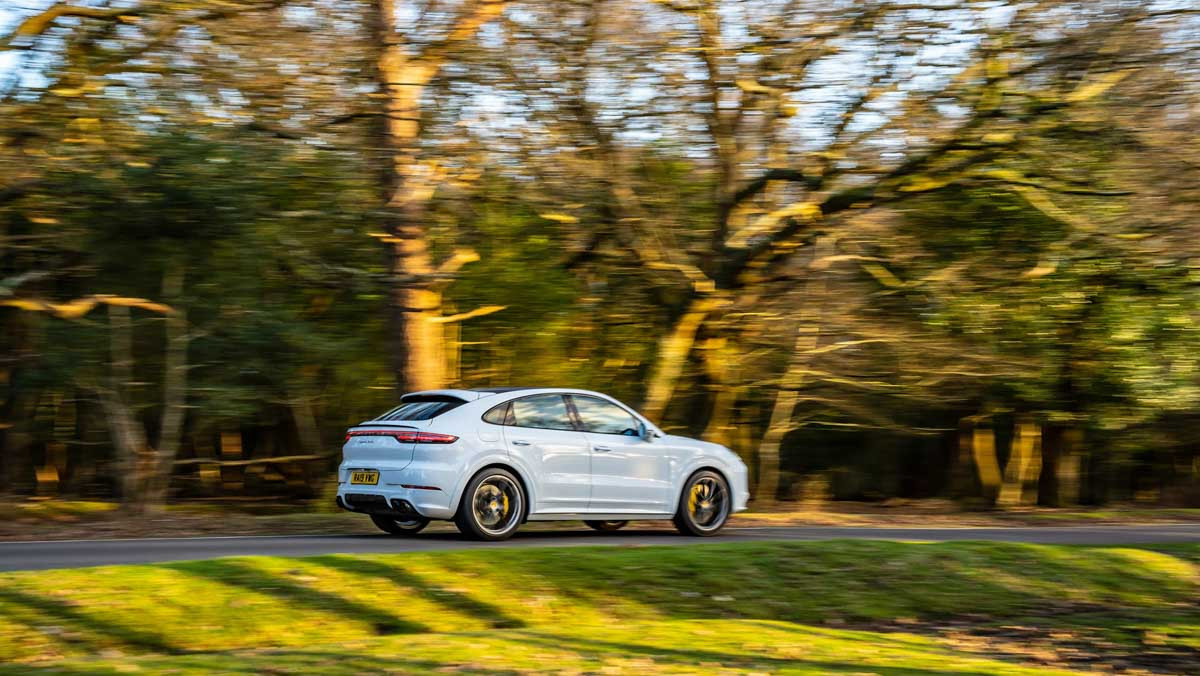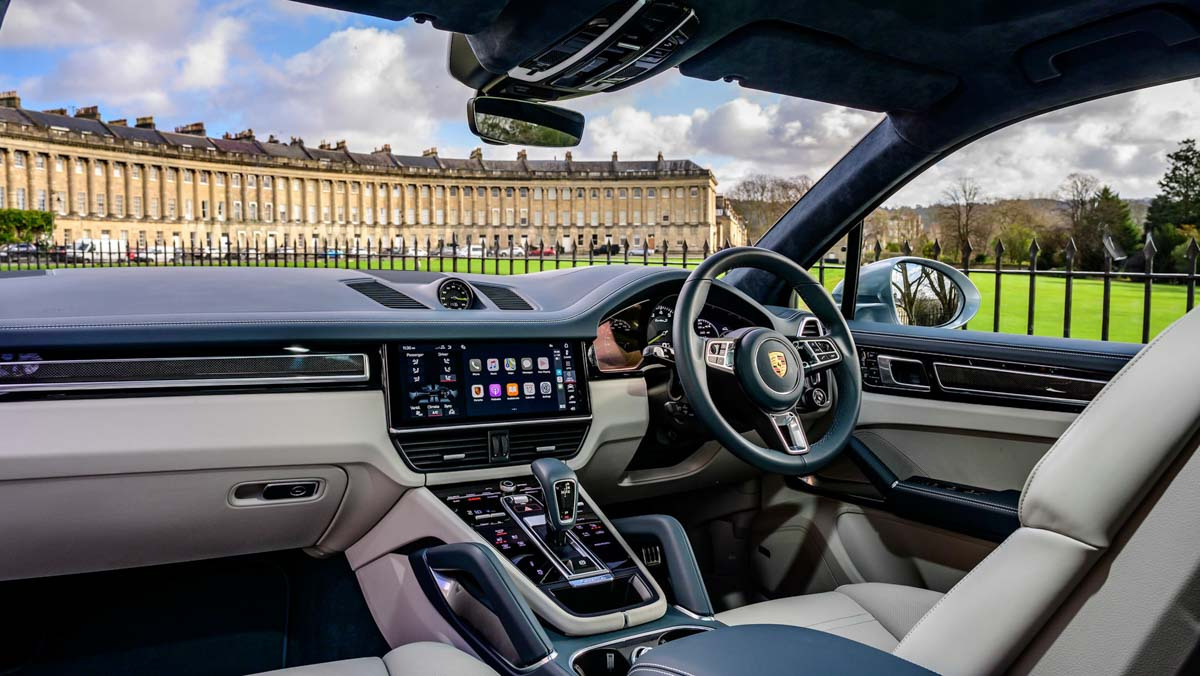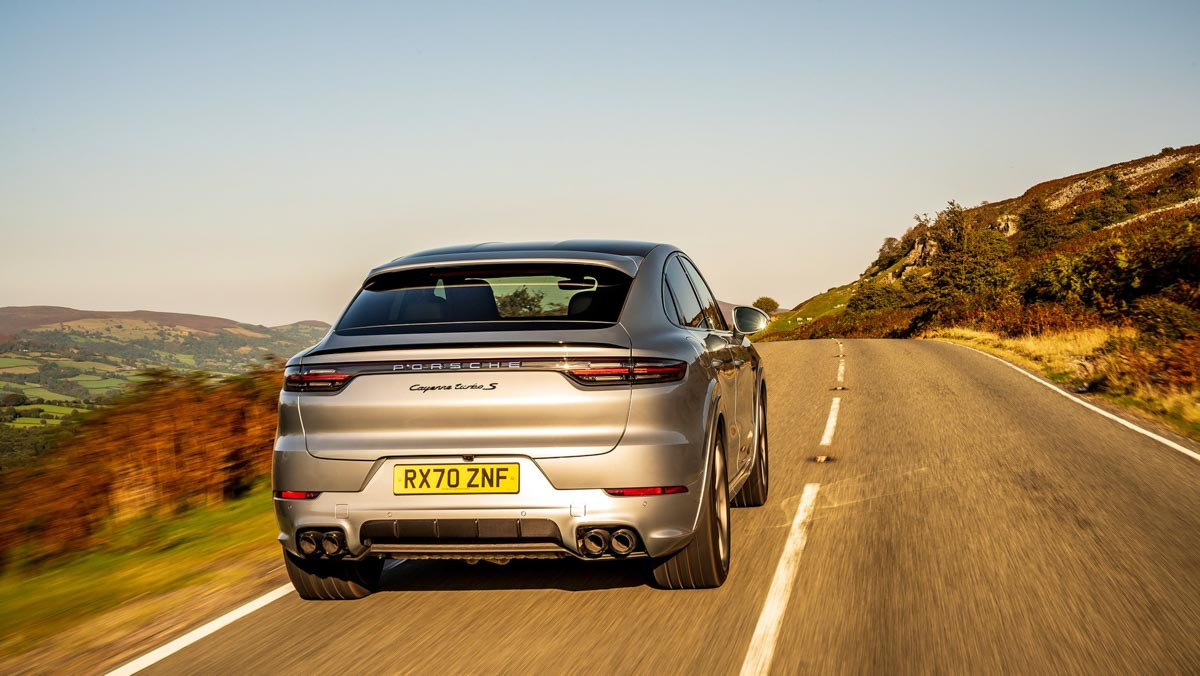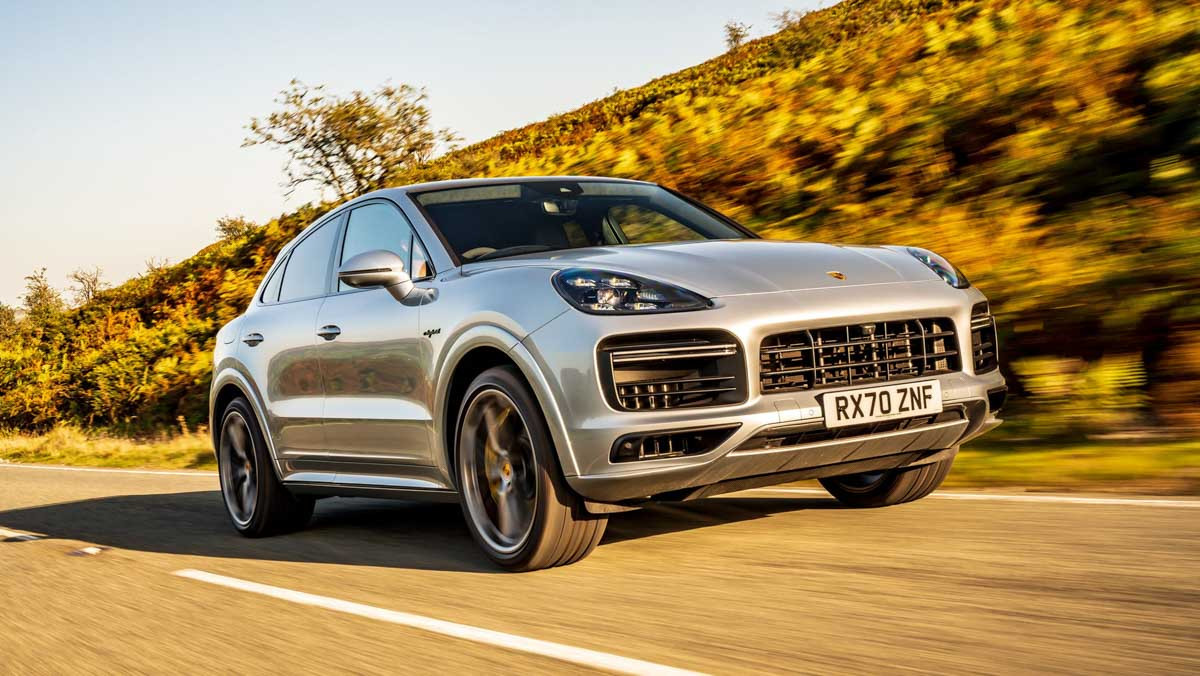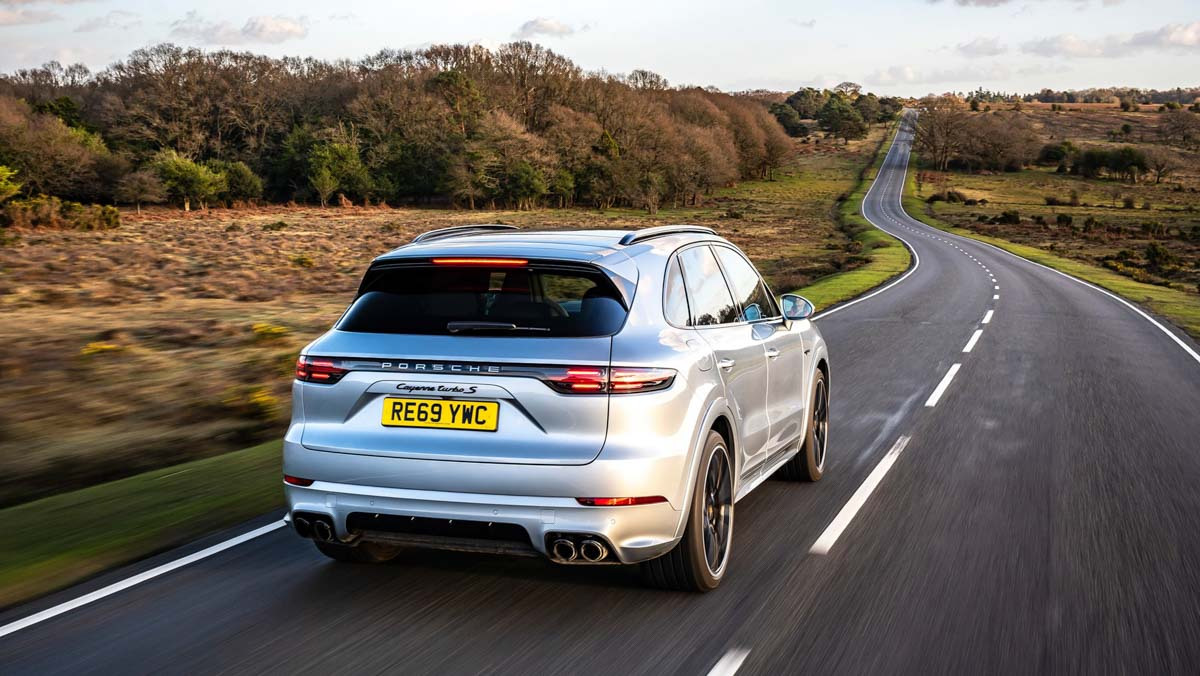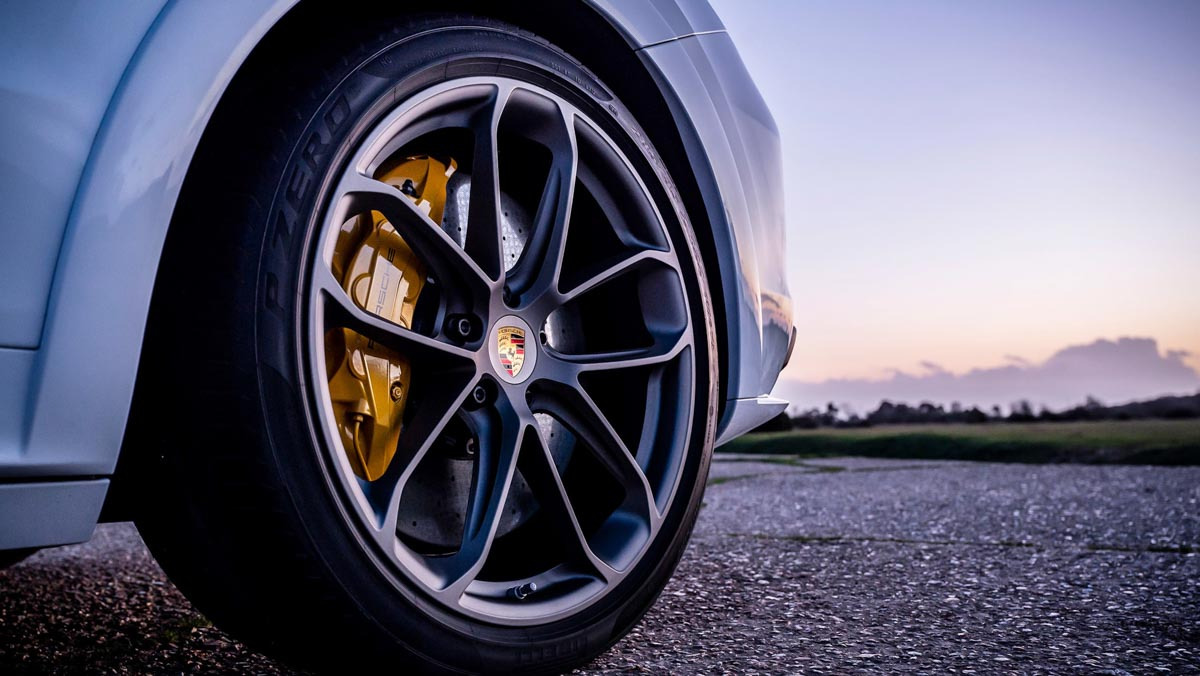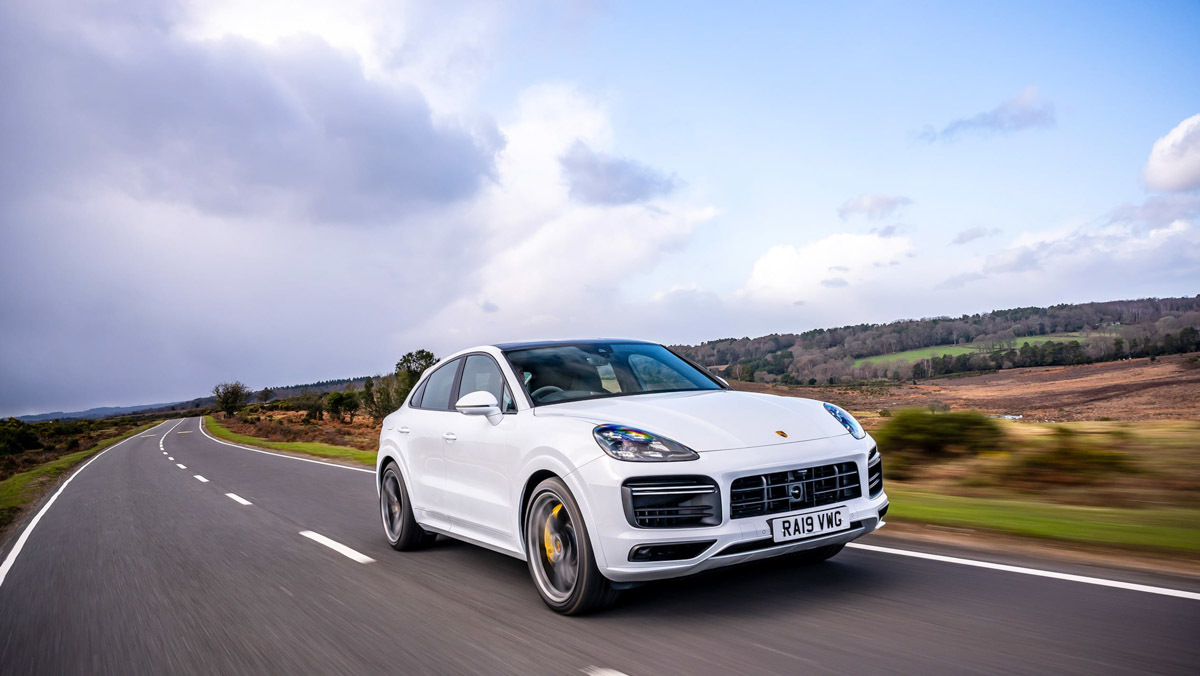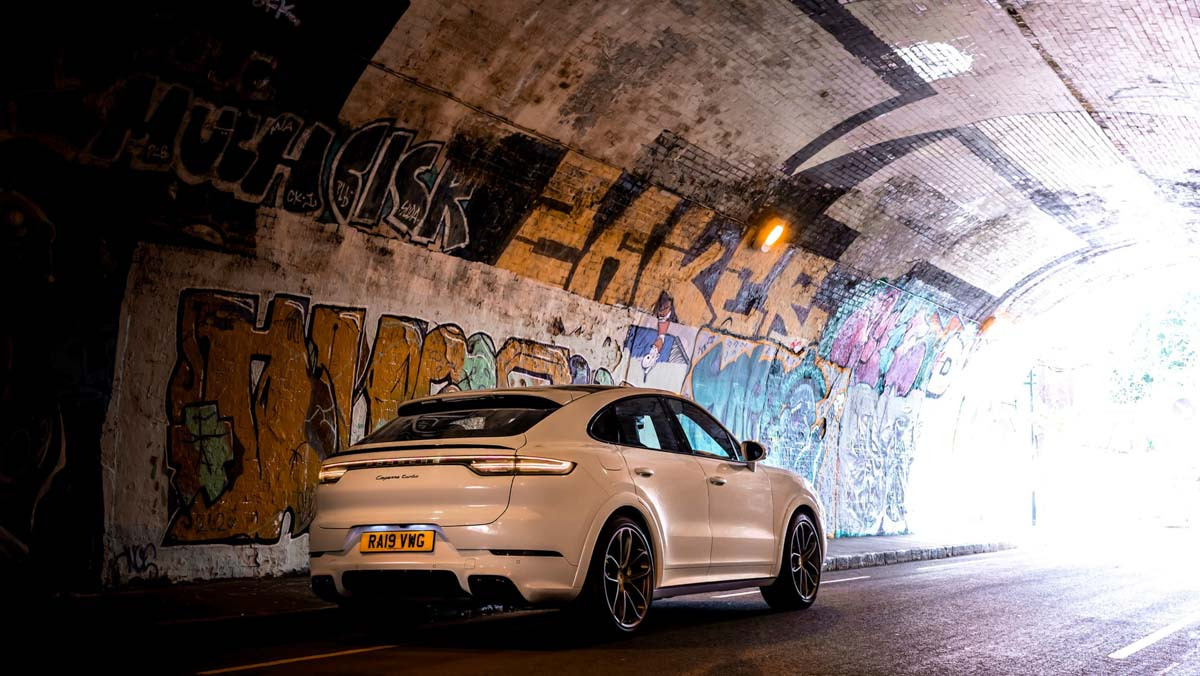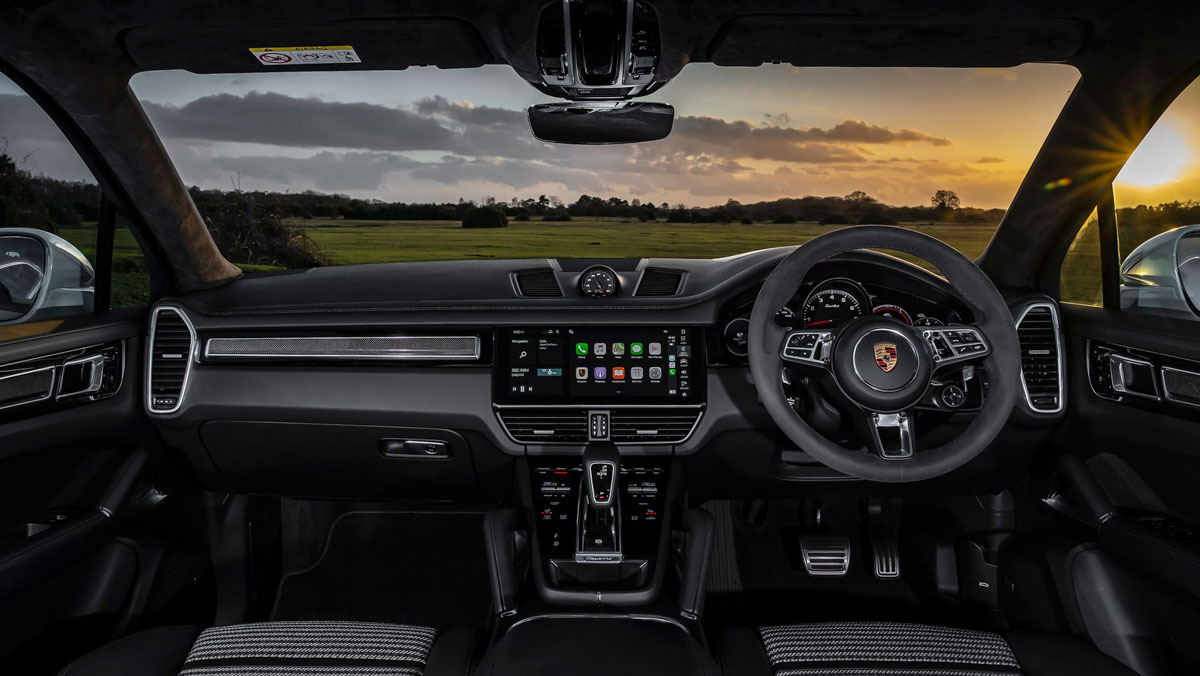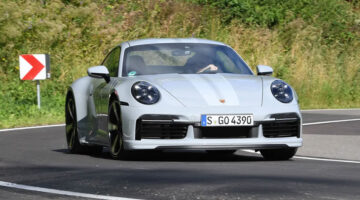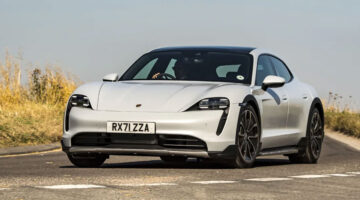The third-generation Porsche Cayenne has the goods as an SUV, but talent is not spread evenly across the range
| Best large SUV to drive this side of an Aston Martin DBX, does have a Porsche ‘feel’, beautifully built | |
| Hybrid models feel cumbersome and heavy, coupe model adds nothing to the package |
It was the car that flipped out enthusiast types when it first appeared in 2004, but some three generations later there’s little that feels controversial about the Porsche Cayenne. It has come to define a whole class of luxury SUV, and in doing so has expanded into a variety of different variants, and a second Coupe bodystyle.
The current Cayenne hasn’t fundamentally changed in terms of size or focus, but has rather been through a process of consistent refinement which has resulted in a package many rival brands across the sports and luxury spectrum have attempted to imitate.
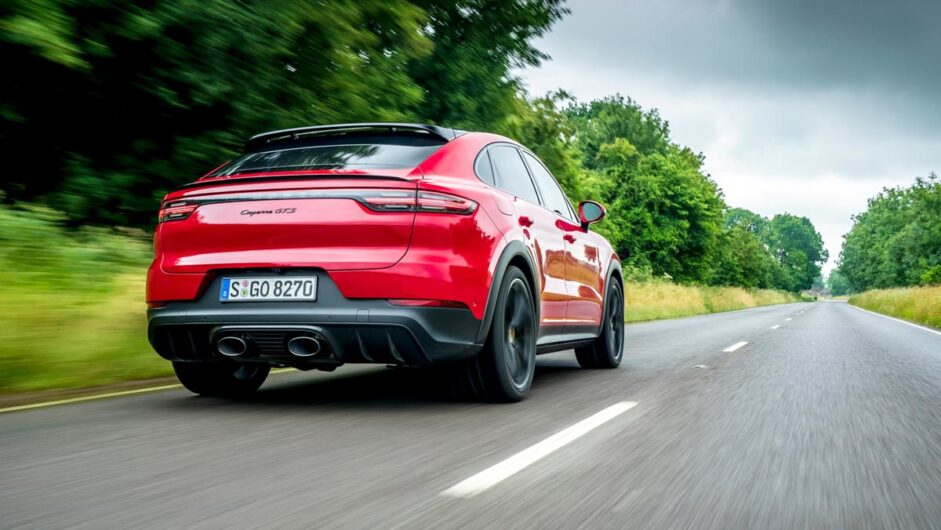
In keeping with Porsche’s reputation of engineering excellence, the Cayenne is powered by a combination of dedicated petrol or plug-in hybrid powertrains (diesel was ditched at the beginning of the current model’s market introduction), and spreads across a range of price points and specifications.
Of course, the Cayenne’s real USP in its crowded segment was its driving capability, the car easily besting all key rivals since that original was launched over 15 years ago. The question is, does the latest Porsche Cayenne still have a lead on the competition?
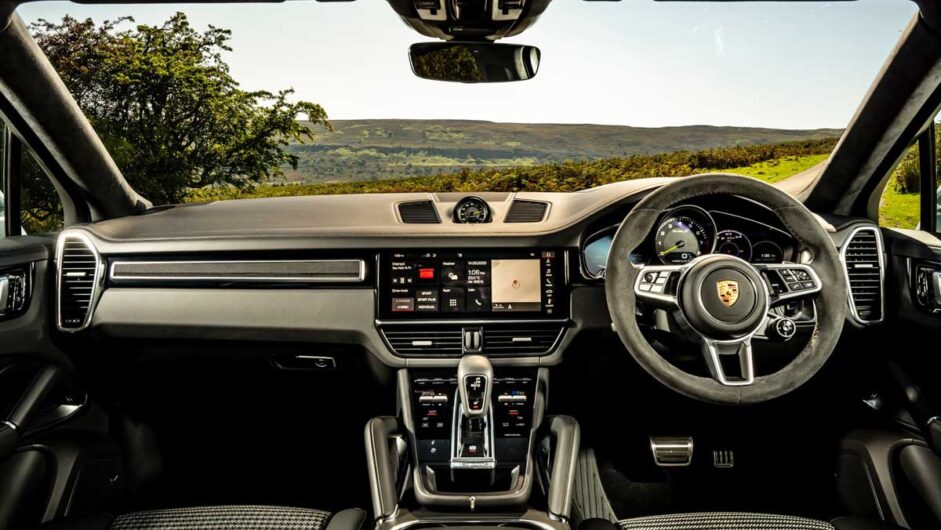
Prices, specs and rivals
Gone are the days when models like the Porsche Cayenne were split between two, maybe three variants. Like much of Porsche’s modern model range, diversification in powertrain and specification make for a massive spread of variability in the current Cayenne range. Basic Cayenne models start at a tad under $82,000, and are powered by a turbocharged 3-litre V6 petrol engine. For around a $13,000 premium you can get the plug-in hybrid version which pairs the same engine with an electric motor and 13kWh battery pack.
The Cayenne S is the first to use a more serious powertrain, losing around 100cc, but gaining a turbocharger for its V6. At just over $100k, it’s the most expensive six-cylinder variant available, after which the GTS introduces a twin-turbo V8 to the package at $117,000. From here, two Turbo variants are available, with the standard 542bhp Turbo costing from just under $144,000 and the plug-in hybrid 671bhp Turbo S e-hybrid topping the range at just under $175,000, over double the price of the basic Cayenne. The Coupe variants cost between $6200 and $3500 more than the equivalent standard model.

While no Cayenne could reasonably be called ‘poverty spec’, most of what one might expect to be standard fit is relegated to the options list. Keyless entry-and-go, adaptive cruise control and any parking cameras are cost options on a majority of models while any really high spec inclusions like the Burmester hifi or 360 parking cameras are still expensive additions even right up to the $173k Turbo S e-hybrid.
Given the increasingly varied ranges on offer in this sector, the Cayenne can be tricky to pin down against direct rivals, but generally it sits a tad higher in terms of price than German rivals from BMW, Audi and Mercedes-Benz. It’s nearer to the slightly posher Range Rover Sport.
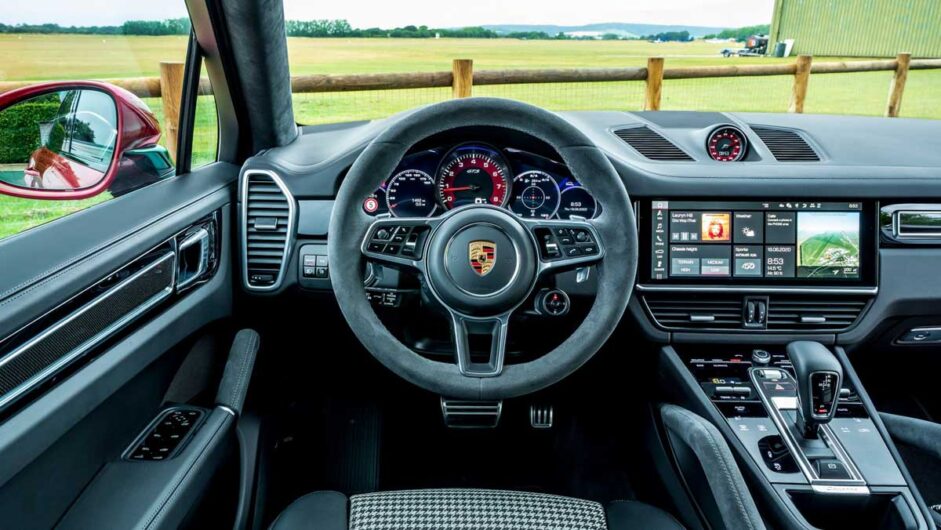
At the high-end, things are more complicated, with the standard Turbo being both less powerful and less expensive than many of the cars that act as the flagship performance SUV models for rival brands. A BMW X5M Competition for instance costs around $14k more than the Turbo, but is also neary 80bhp up on the Porsche. The Audi RSQ8 also feels like something of a bargain, with an extra 50bhp and more kit for much the same money.
The Turbo S e-hybrid meanwhile is less of a direct competitor to high performance rivals like these on account of its hybrid powertrain. It has no direct rivals as it stands, but expect that to change.
Engine, gearbox and technical highlights
There are a total of three different engines available across the Porsche Cayenne range, two of which are available with or without plug-in hybrid assistance. The standard Cayenne and Cayenne e-hybrid make use of a 3-litre V6 petrol engine assisted by a single turbocharger. Rather than being a Porsche-developed engine it’s instead borrowed from Audi, and is also found in a spread of models across the Volkswagen Group. The two Cayenne models make 333bhp and 455bhp respectively.
Next up is the Cayenne S, which swaps the standard Cayenne’s 3-litre engine for a 2.9-litre twin-turbo V6 petrol that is Porsche’s own unit (despite also being found in a couple of Audi RS models). In this form the Cayenne S produces 444bhp (as in those Audis) and does so with a compact and energy-dense turbocharger layout. The two turbos are situated within the engine’s cylinder banks to shorten the turbos’ plumbing, and therefore increase response.
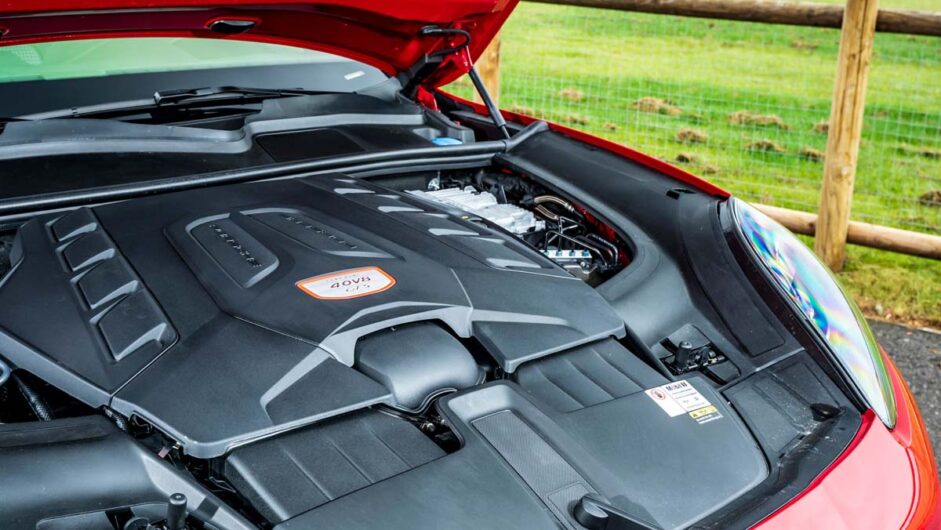
The GTS and Turbo share the same 4-litre twin-turbo V8 engine in 454bhp and 542bhp outputs. The unit also features a hot-V turbocharger layout, and despite the 88bhp variation in power, are pretty much identical in terms of hardware, with the ECU being the modulating factor. The top-spec Turbo S e-hybrid combines the Turbo’s 542bhp version of this same V8 with a similar plug-in hybrid module to that used by the standard e-hybrid, adding a further 129bhp to the power total via an electric motor integrated into the driveline. This adds up to a 671bhp total, with 664lb ft of torque.
All Cayennes feature an eight-speed torque-converter style automatic transmission rather than the dual-clutch gearbox found in the Panamera – all-wheel drive is also standard fit. When it comes to chassis hardware there’s a big variation within each model, helping distinguish each beyond just the differing engine. All V6-powered Cayennes and the GTS ride on steel coil springs, with adaptive dampers standard on all-but the entry-level model (air is optional). Turbo and Turbo S e-hybrid models pick up standard three-chamber air suspension, with the latter also featuring an active anti-roll system.
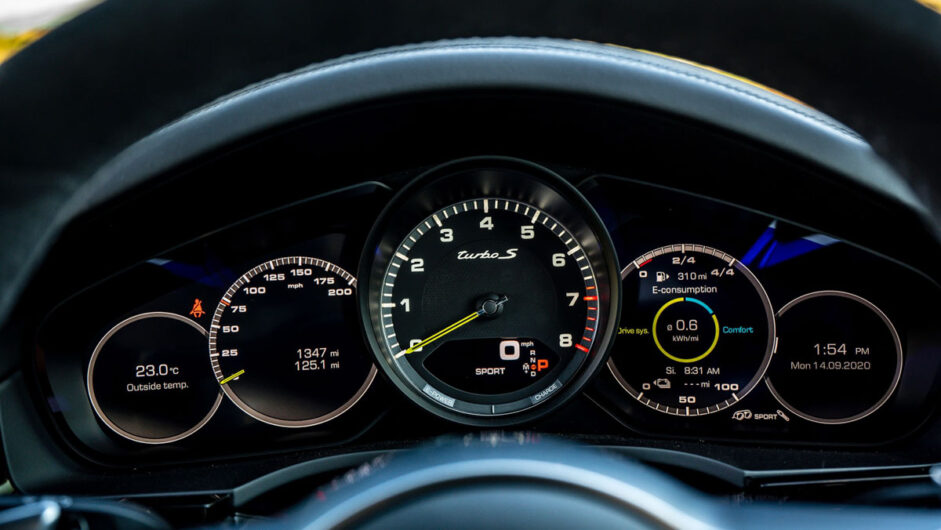
The optional Sport Chrono package (standard on GTS and Turbo S) adds a further mode to the dampers regardless of model, while the staggered wheel sizes range from 19-inches up to 22-inches. Rear-wheel steering is optional on all models, so too a variable steering rack, torque-vectoring rear differential and sports exhaust system.
Cayenne S and GTS models share a slightly upsized brake package from the standard and e-hybrid models, while the Turbo utilises Porsche’s silicone-carbide coated brakes denoted by white calipers (PSCB). Turbo S models are fitted with the full carbon ceramics (PCCB) as standard. Both hybrid models also have a regenerative braking facility, and both the PSCB. PCCB braking packages are optional on lesser models too.
With such a varied range, kerb weights are just as diverse, with a basic Cayenne slipping just below 2 tons at 1985kg and the top-spec Turbo S e-hybrid getting over 500kg heavier at 2490kg. Coupe models are identical in setup, although the rear track is 40mm wider. They’re also around 45kg heavier than the equivalent wagon version, thanks to that extra width, the standard-fit glass roof and more complex tailgate that incorporates an active rear wing. That makes the Cayenne Coupe Turbo S e-Hybrid a quite staggering 2535kg on the road.
Performance and 0-100 time
All Cayennes are reasonably brisk, with the standard Cayenne reaching 100kph in 6.2sec, and going on to 250kph. The numbers only get more impressive from here though, with the e-hybrid reaching 100kph in 5sec dead, the S in 5.2sec, the GTS in 4.8sec, Turbo in 4.1sec and finally the Turbo S e-Hybrid in 3.8sec.
On the road, all non-hybrid models feel unstressed, with all powertrains being impressively responsive with plenty of low-down torque and Porsche’s typically excellent calibration across all components of the powertrain. Hybrid models, although fast on paper, do feel their extra weight under acceleration and braking, as the electronics manage the blending of combustion and electric power. Both (particularly the Turbo S e-hybrid) feel more lethargic and cumbersome as a result.
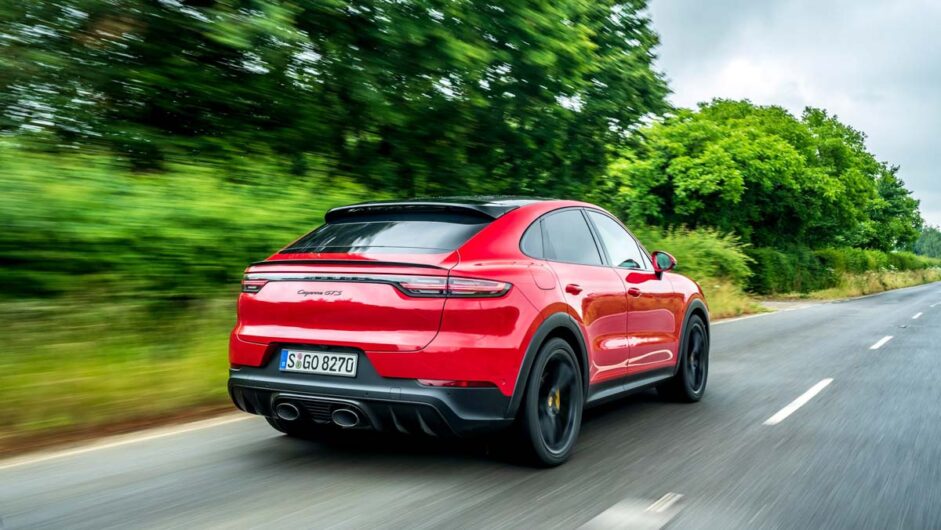
The sweetest powertrain of the range is the GTS, which manages to combine a deep guttural V8 growl with performance that feels well-judged for the road. Turbo models, let alone Turbo S, are faster on the road, but given the physics involved feel unsatisfying, as you’re always acutely aware of the energy required to control that much fast-moving mass.
The transmission, no matter the model, is sharp in its sportier modes, with that typical snap under full-throttle upshifts and some well-judged blips on the way down the ratios. It works seamlessly with the all-wheel drive system too, which is rear-biased and actually quite playful when the roads are slippery.
Ride and handling
There’s a feeling to all-forms of Porsche that somehow seems so well-judged from the moment you settle into the firm driver’s seat. Critical touch points – the size and thickness of the steering wheel, the firm pedal response and the damped slickness of the transmission selector, they all purvey a quality beyond just materials, one that tells of painstaking development. Despite sharing a majority of its components with the Audi Q7, Volkswagen Touareg and Bentley Bentayga, the Porsche Cayenne’s feel is instantly distinguishable, and the package is all the better for it.
Despite the variety of models within Porsche’s current range, there’s still a consistency to certain controls and their weights which is rather gratifying, starting with the steering itself. The rack isn’t overly fast, but the weight is quite heavy for this type of car, and with that movement comes impressive accuracy.
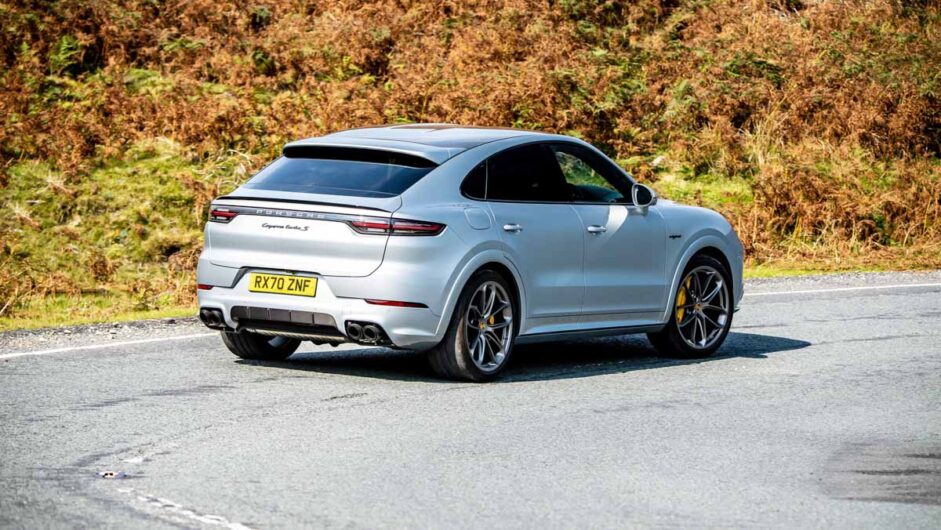
All models on the PASM sport suspension have a firm edge to the ride, but wheel control over sharp road intrusions is impressive and the suspension never feels out of step or control even with what is admittedly a lot of weight and a lofty centre of gravity.
The GTS is the best example of this in the range. Although it rides on 21-inch wheels, it strikes an impressive balance between control and comfort, even if luxury car levels of isolation from the road-surface aren’t on the menu. When fitted with the optional air-suspension, all models find a good rhythm with the road surface certainly, but up the wheel size and the reduction in tyre sidewall can be problematic as it introduces a brittleness, especially on hybrid models.
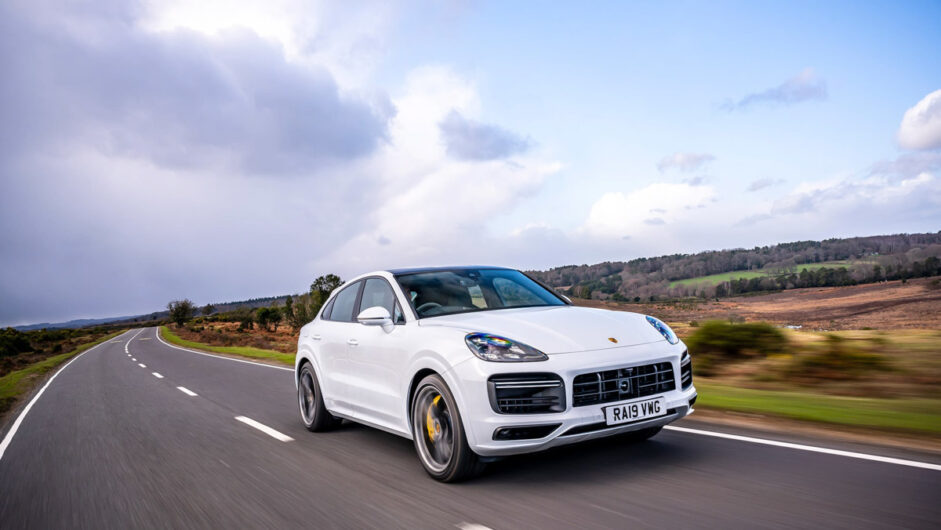
The Turbo S e-hybrid isn’t quite so sorted, as despite employing quite literally all of Porsche’s hardware tricks to keep the handling in check, its sheer 2.5-ton mass is always at the head of proceedings, with the body incapable of managing the weight on both lateral planes. Under hard acceleration, there’s a hesitation driven not by the powertrain’s lack of response, but the body’s physical desire not to move forwards. Enter into a corner and in dry conditions it really does feel as if the tyres are peeling off the rims, such are the forces involved. In greasy conditions the tyres just give up the ghost entirely, leading to some pretty terminal understeer that forces you to pootle around at low speeds like you’re driving a 700bhp Jeep Wrangler.
The Turbo S e-hybrid also struggles with its carbon ceramic brakes, with the blending of regenerative and friction braking knocking your confidence in the components you certainly feel you need to lean on most. Apply brake pressure and the regenerative brakes are the main device, however once you’re deep enough into the travel to call in the ceramics, they bite quite suddenly, making the braking difficult to modulate.
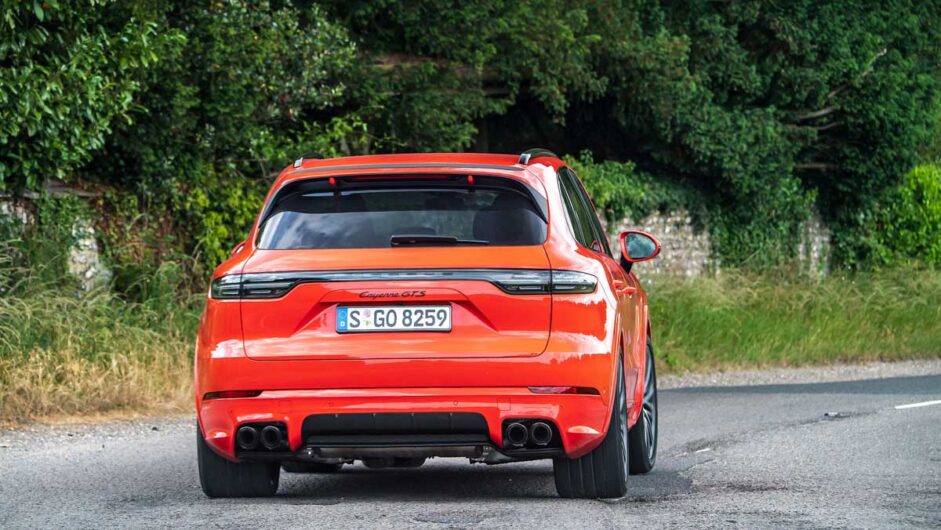
Body roll is contained – that’s the 48V active anti-roll system working – but in countering the body’s movement it intensifies the disconnection between the driver and the car. Turn into a corner, load the chassis and instead of feeling that corner dig down into its suspension travel, thus creating grip, the movement is counteracted, making front wheel skitters across the surface creating some pretty terminal understeer.
The Cayenne is best when kept in its simpler forms, and compared to all mainstream premium rivals it still rules class when it comes to on-road dynamics. Looking further up the stream of big-money SUVs, the new Aston DBX shows it a thing or two in delicacy and feel, but is a far more expensive machine.
L/100km and running costs
The Cayenne is a large, petrol-powered and therefore thirsty vehicle no matter the specification. On the WLTP cycle, the base Cayenne’s 12.8-11.8L/100km rating is hardly impressive, with the S and GTS needs extra 1L/100km each. The Turbo is the least efficient at 14/L/100km on the combined cycle.
Plug-in hybrid models are much stronger on paper, with the standard e-hybrid showing between 3.7-3.1L/100km on the official cycle, with the Turbo S e-hybrid’s rating between 4.2-3.8L/100km. Like all plug-in hybrids however, unless you have consistent access to a charger and leave the car in its hybrid or EV modes, those figures will be impossible to match on the road.
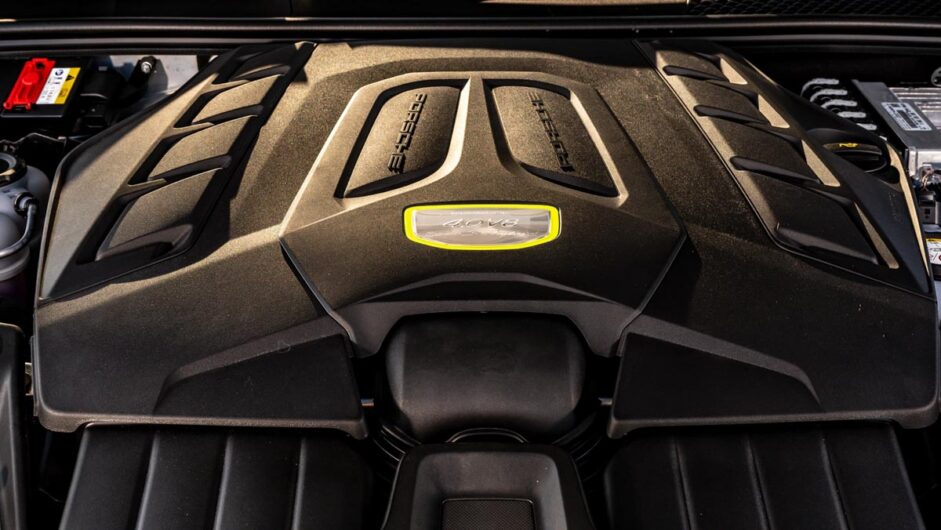
Both hybrids have the same electric motor and 13.1kWh battery pack. Both should be capable of around 30 kilometers of low-speed driving on EV power alone, but once you slip back into relying on the petrol engines, things look very different. After a day of mixed driving on motorways and backroads, the Turbo S e-Hybrid slipped to nearly single digits once the electrical assistance had been used up.
The stark reality of running a big heavy SUV on such substantial hardware will also be pretty fierce once consumables like tyres, brake pads and bushes start wearing, but on the upside residual values are extremely strong, so it will retain an impressive amount of value to compensate.
Interior and tech
The Porsche Cayenne’s interior is a masterclass of translating both architecture and detailing from an icon into another, altogether different, vehicle. The large central analogue rev-counter is a beacon of Porsche’s design heritage, and is joined by a multitude of digital interfaces, but so carefully are they woven into the layout that using the Cayenne’s controls remains a distinctive and rewarding experience compared to rivals.
The 12.3-inch central touchscreen is the command centre for the interior as a whole, with a clean and clear interface that’s quick to acclimatise too and easily configured to your preferences. Below sits the wide touch-sensitive panel that gives direct access to both the air conditioning and heating controls, plus some of the dynamic systems, such as the adaptive suspension mode.
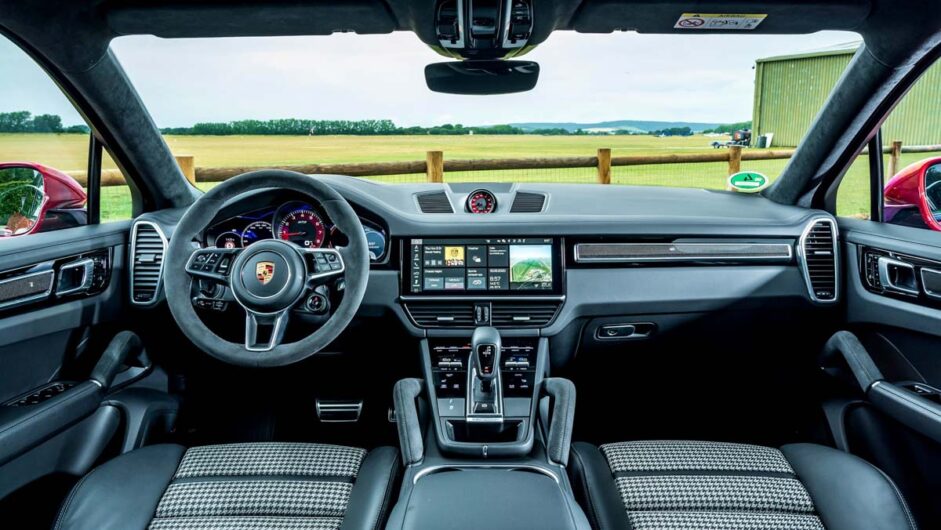
Behind the interface and design though, the basics of the Cayenne are right. The seating position is about as good as it gets in an SUV and the seats themselves are firm, but superbly comfortable, especially over long distances.
Coupes fitted with the optional Lightweight Design package pick up bespoke Houndstooth interior fabric inserts, which not only reference heritage fabrics from Porsche’s back catalogue, but also lift the interior ambiance beyond that of just another premium SUV. It’s an interior that regardless of specification and price point feels fitting for the Cayenne.
Design
Where once the Cayenne was seen as a stain on the automotive design landscape, so now it is actually one of the more subtle, sophisticated and attractive large SUVs on sale. There are three different styling angles, with the standard and Turbo models having distinctive front ends, with a further Sport Design option available on all models.
No variation is particularly distinguishable from the other, save for the Turbo’s double-bar running lights that have come to define Turbo models in Porsche’s range. Opt for 21-inch wheels or above and Porsche will throw in some subtly flared arch linings in a body-coloured finish, which are also standard fit on the Sport Design package.
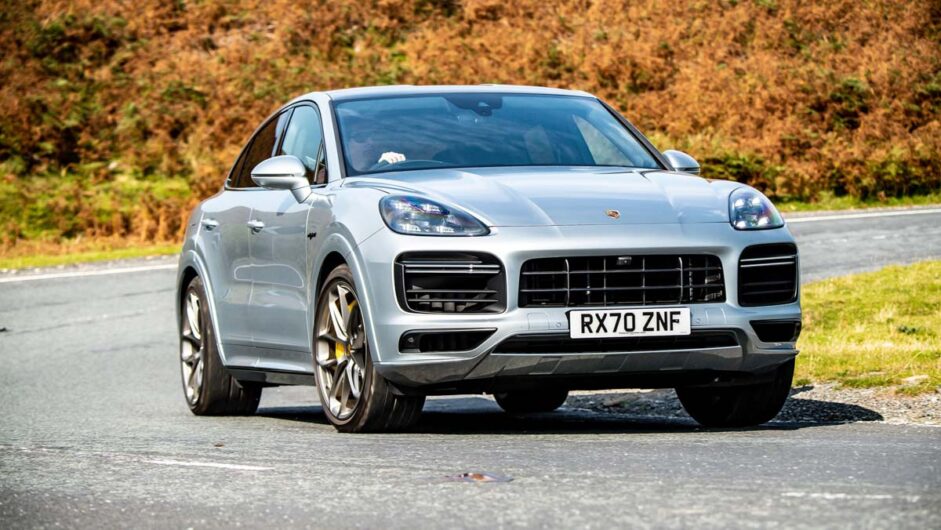
LED lighting is standard fit across the range, with two different options available on the front (with and without Matrix functionality) and in either a standard silver, or darkened internal finish. Porsche’s now trademark rear light bar is also an essential part of the rear design package, with the rear exhaust tips also varying between the different models.
Turbo models without the optional sports exhaust package have a different design again, with four oblong pipe finishers, but all Cayennes are able to be fitted with a sports exhaust system with four round pipes in silver, or black. There’s also a further centrally-mounted sports exhaust option for the GTS.
The Coupe’s design specification generally mimics that of the standard body, but unique to it is the Lightweight Design package which pairs the Sport Design bumpers, with a carbonfibre roof, bespoke 20-inch wheels, a subtle lip at the end of the active rear wing.
This article originally appeared at evo.co.uk
Copyright © evo UK, Dennis Publishing

